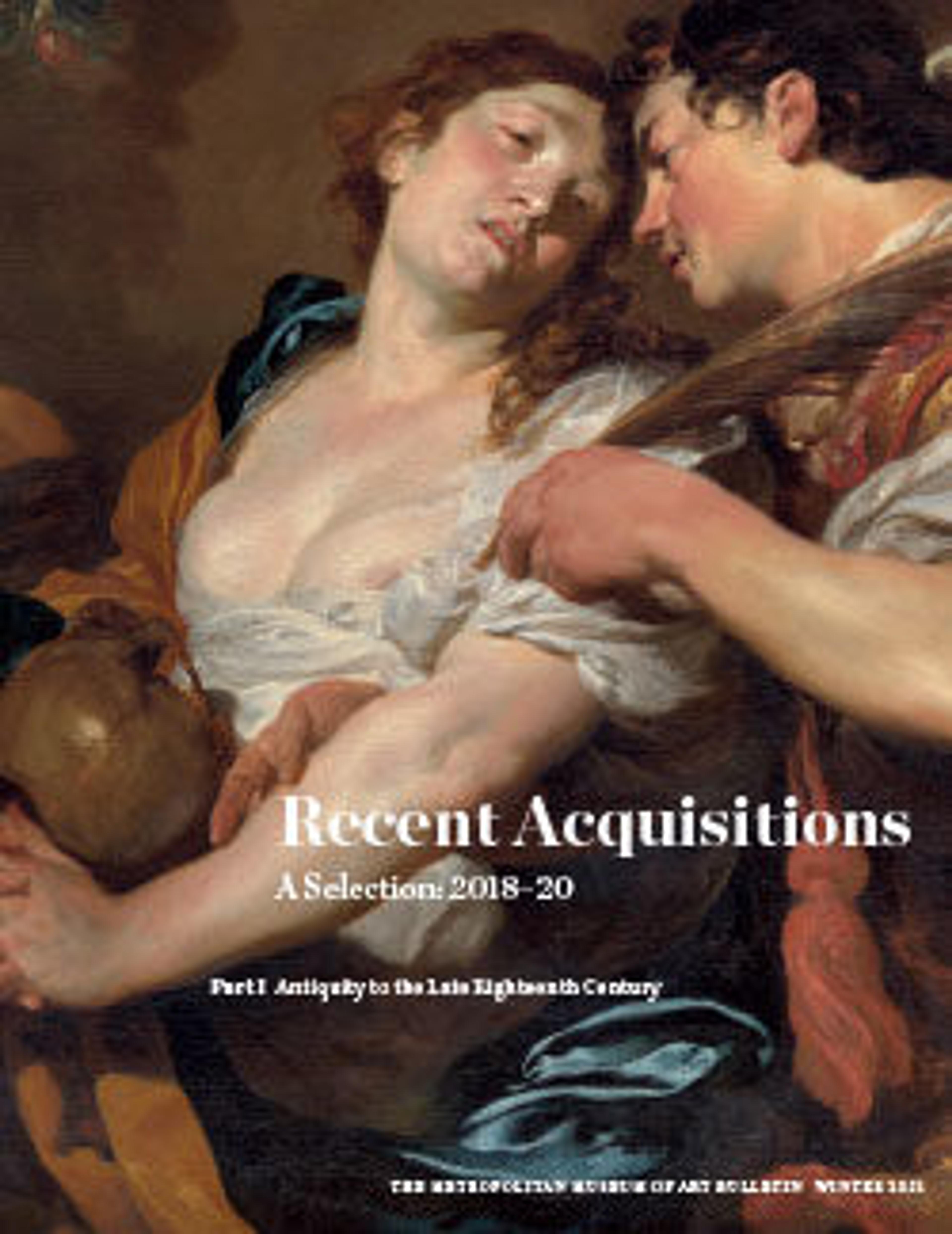Inkstand in the form of a pomegranate in a gilt-bronze mount
Before the royal patronage of Sèvres dominated the high-end ceramics market in the second half of the eighteenth century, small factories such as Chantilly, Mennecy, and Villeroy created experimental works that drew upon the Chinese and Japanese forms that inspired Meissen porcelain makers. An example of Rococo design, this vibrant inkstand demonstrates the ways in which French porcelain makers not only sought to recreate Asian porcelain, but catered to the desire for the fantastical and strange. The unusual form of a giant bursting pomegranate next to the gnarled roots of a tree turns a quotidian object like an inkstand into something out of a fairytale.
Artwork Details
- Title: Inkstand in the form of a pomegranate in a gilt-bronze mount
- Maker: Chantilly (French)
- Maker: or possibly Villeroy (French, 1734/37–1748)
- Date: porcelain ca. 1735, mounts ca. 1740–50 and later
- Culture: French, Chantilly or Villeroy
- Medium: Soft-paste porcelain, gilded bronze
- Dimensions: Body (a): 5 3/8 in. × 10 5/16 in. × 7 in. (13.7 × 26.2 × 17.8 cm)
Overall (with lid): 5 15/16 × 10 15/16 × 7 in. (15.1 × 27.8 × 17.8 cm)
Lid (b): 1 1/16 × 1 3/4 in. (2.7 × 4.4 cm) - Classification: Ceramics-Porcelain
- Credit Line: Bequest of Mrs. Charles Wrightsman, 2019
- Object Number: 2019.283.55a, b
- Curatorial Department: European Sculpture and Decorative Arts
More Artwork
Research Resources
The Met provides unparalleled resources for research and welcomes an international community of students and scholars. The Met's Open Access API is where creators and researchers can connect to the The Met collection. Open Access data and public domain images are available for unrestricted commercial and noncommercial use without permission or fee.
To request images under copyright and other restrictions, please use this Image Request form.
Feedback
We continue to research and examine historical and cultural context for objects in The Met collection. If you have comments or questions about this object record, please contact us using the form below. The Museum looks forward to receiving your comments.
